5. Apocalypse Now (1979, Francis Ford Coppola)
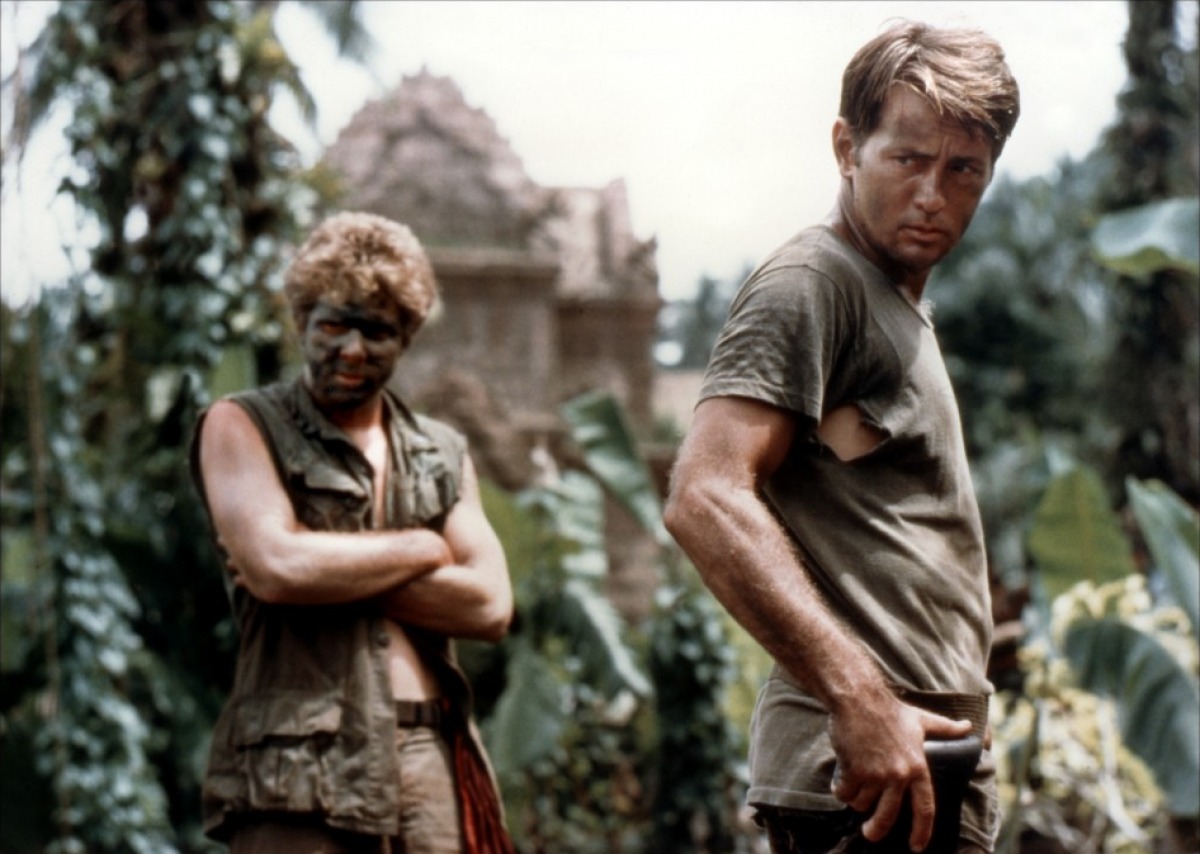
The poster boy for all production nightmares and the stories surrounding it nearly as famous as the classic film itself with a behind the scenes documentary, Hearts of Darkness, that evolved from a simple promotional film into a thematic companion piece depicting the personal descent into hell and insanity Francis Ford Coppola experienced in making this Vietnam War set psychological thriller.
Fully entering active production in 1976 yet released in 1979 after an endless list of setbacks and disasters that include an originally planned 14 week-long shoot that ended up being extended to a year due to a typhoon and flash floods at the shooting location in the Philippines that frequently destroyed sets. A bored cast and crew, who without any work to do during the set re-builds, spent the majority of their time excessively partying and consuming hard drugs and liquor.
Harvey Keitel, who was set to play the lead role of Willard, was fired by Coppola weeks into the shoot after being deemed miscast and replaced by Martin Sheen, only for Sheen to be suffering from alcoholism (the hotel room freak-out at the beginning of the film features him genuinely intoxicated) and having a near-death experience after suffering a heart attack on set.
Marlon Brando (a seemingly bad luck charm for your film), playing the tyrannical Colonel Kurtz, turned up on set significantly more overweight than he was when cast and under-prepared for the role after refusing to rehearse his dialogue.
Even more un-cooperative was Dennis Hopper whose hedonistic lifestyle meant he was often on heavy amounts of cocaine throughout the shoot, demanding to be supplied with more drugs in order to carry on with filming which inevitably created heavy friction between him and Coppola. Coppola’s mental health became so poor during the gargantuan shooting schedule that he became severely underweight and frequently contemplated suicide.
A now iconic line uttered by Coppola in Hearts of Darkness, “My movie is not about Vietnam… my movie is Vietnam”, provides a perfect summary for his experience in revealing how the filmmaking process can be more than just physically arduous and time consuming, it can also be seriously harmful to the human psyche.
4. Fitzcarraldo (1982, Werner Herzog)
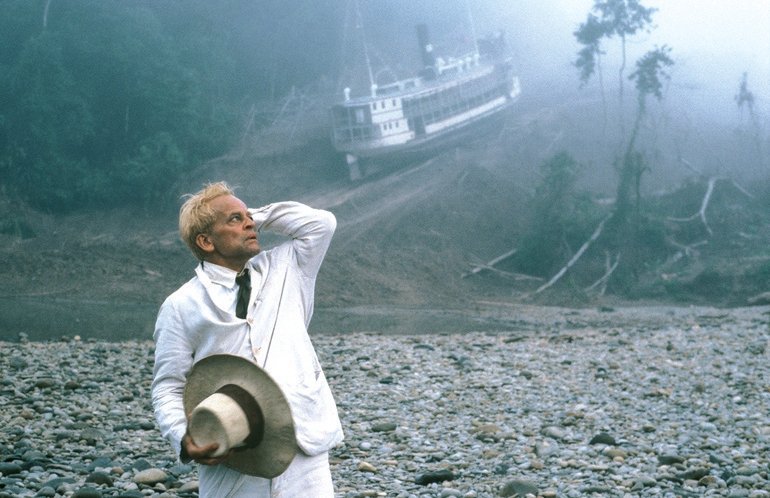
A true example of an auteur refusing to compromise their cinematic vision, Herzog’s epic adventure Fitzcarraldo featured the dragging of a 320-tonne steam ship over a hill, a more than arduous task deemed necessary by Herzog for the purpose of making great cinema (although this eventually paid off for the filmmaker after he took home the Director’s prize at Cannes).
A filmmaking experience that was inadvertently meta in its mirroring of the actual plot of the film (the transporting of a ship over a mountain in an effort to reach an area rich in rubber in Peru’s jungle) and crew members suffered injuries in attempting to haul such a colossal object.
Original star Jason Robards contracted dysentery weeks into filming and was instructed by doctors to immediately drop out of the film and after Herzog searched for multiple replacements for the titular rubber baron, turned to his past collaborator and sometimes friend/often foe, Klaus Kinski.
After the actor’s boarding, the film had to be completely restarted and Kinski’s behaviour on Fitzcarraldo was as to be expected for the famously volatile actor, who on the set of Herzog’s Aguirre: Wrath of God, pulled a gun out and threatened to kill the director. Kinski was detested so much by the natives working on the film that they proposed to Herzog they’d be seriously willing to murder him.
In the midst of filming in a dangerous jungle battling against the elements and dealing with a maddening Kinski, native extras were attacked by an opposing tribe which spurred a revenge driven counter-attack, there were plane crashes that inflicted life changing injuries and diseases that killed crew members.
One Peruvian was even bitten by a snake and to halt the spread of venom, made the decision to amputate his own foot with a chainsaw. Fitzcarraldo’s production is a cinematic feat that has never been attempted since, and with all the incidents listed, for good reason.
3. The Crow/Crow: City of Angels (1994/1996, Alex Proyas/Tim Pope)
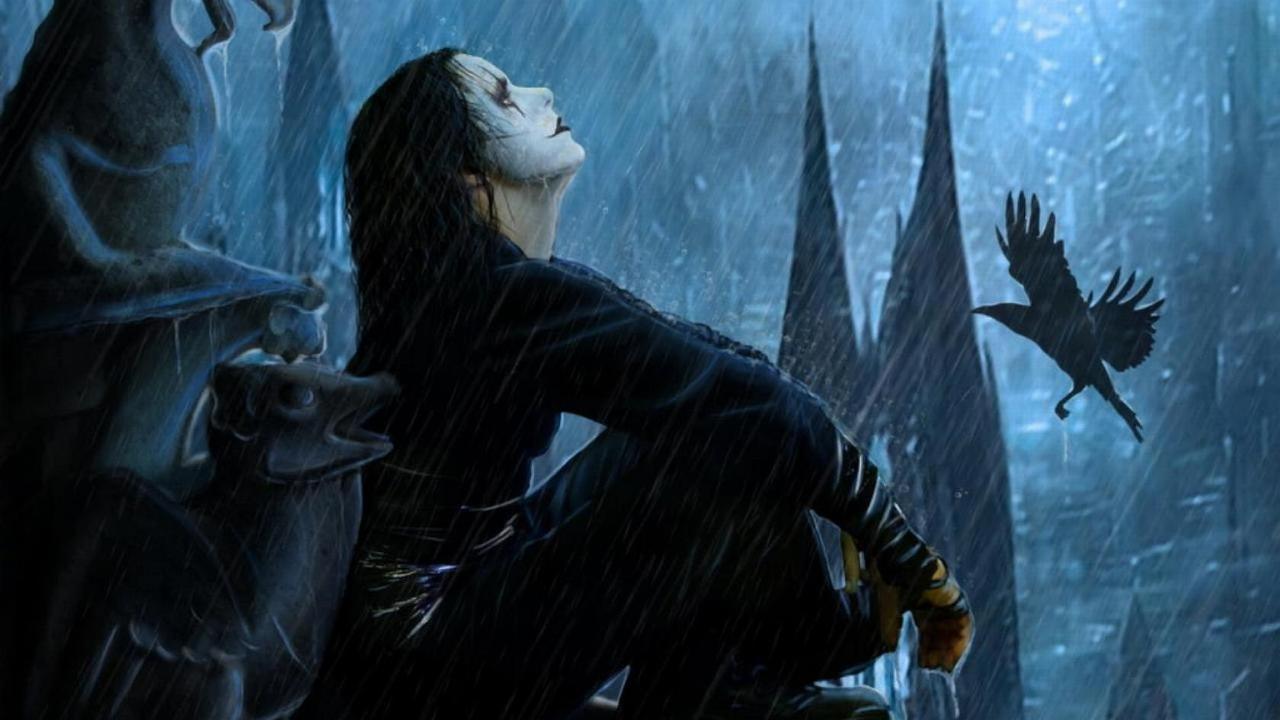
An overall tragedy that came along with an already difficult production – a situation James Wan similarly faced when Paul Walker died mid-way through production of Fast 7 – it’s a near impossible task to complete your film when the star is no longer there to finish it.
It’s even more severe when that star dies on the actual set while cameras were rolling as was sadly the case when Brandon Lee was accidentally shot and killed by his co-star, Michael Massee, due to a fault with the blank cartridges he was supposed to fire in the scene.
With only a few days left for Lee to complete scenes, the studio made the respectful decision to finish the film with Lee still in the lead role as opposed to completely recasting the role of the resurrected and vengeful Eric Draven.
Additional money was provided for the extra stand-ins and for the CGI that was implemented for those remaining scenes with future John Wick director and veteran stunt performer, Chad Stahelski, acting as Lee’s body double with the actor’s face digitally superimposed onto him.
For the film’s sequel, David S. Goyer developed a script largely separate in tone and story to Alex Proyas’ original out of respect to Lee. The Crow: City of Angels was to be a more melancholic tale that expanded on the mythology of The Crow with director Tim Pope filming this version which ended up with a lengthy 160-minute-long run time.
The Weinstein’s Miramax label (notorious for butchering their own films in attempt to make them more commercial – a strategy that rarely works) then decided they wanted a sequel that acted more of a remake so to resemble the original as much as possible. They then edited City of Angels down to a meagre 84 minutes and transformed it into a generic revenge tale and a pale imitation of the original.
It’s hard to know if the longer cut was significantly superior than what was given, but it just provides another example of the harm the studio system can have on the art form. Both Pope and Goyer were quick to dismiss and disown the studio version, with their edit likely never to be released.
It seems that the proposed reboot, tentatively titled The Crow: Reborn, is just as doomed as previous entries with the constantly changing actors cast as Eric Draven. It started with Bradley Cooper – with concept art available online of his potential look in the role – then it was Tom Hiddleston, Luke Evans, Jack Huston, all of whom were attached for a time only to drop out.
The film’s distributor and production home, Relativity Media, went bankrupt diminishing hope it will ever get made. As recently as early this year, Sony picked up the distribution rights and attempted to fast track the film for an October 2019 release date with Jason Momoa now donning the harlequin face paint and The Nun director, Corin Hardy announced as the man behind the camera.
The project has, predictably, died again with a recent Deadline report reading that “creative and financial differences with Samuel Hadida, whose Davis Films holds the underlying rights and who was financing the film” led to both Momoa and Hardy exiting and Sony removing it entirely from the release schedule.
2. Alien 3 (1992, David Fincher)
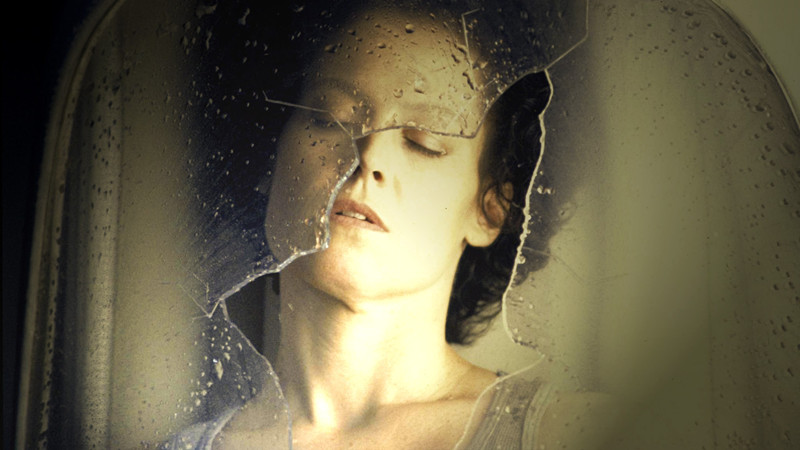
20th Century Fox made the wise decision of releasing a teaser trailer and marking a release date for the third entry in the Xenomorph saga before filming had even commenced, or even without a script. The trailer voice-over proclaims that “On Earth…everyone will hear you scream” suggesting a bombastic spectacle of Sigourney Weaver’s Ripley battling H.R Giger’s phallic designs on humanity’s home turf.
If you’ve seen David Fincher’s directorial debut, you’ll realise that this divisive instalment bears zero resemblance to anything found in this teaser. A film with so many scripts delivered and stops and starts that it’s a miracle it ever escaped development hell. Approaches to this threequel range from big budget action focus that switched out Ripley for Michael Biehn’s Corporal Hicks in the lead after Weaver became reluctant to return to her most iconic role, to Neuromancer author William Gibson’s script that plays out as a Cold War allegory.
One bizarre script featured a kaiju-sized Xenomorph but thankfully was scrapped by the studio. David Twohy’s draft introduced the space prison which made it into the final film but it was Vincent Ward’s take which got closest to being made with many of his story elements (Ripley being impregnated by the facehugger, the untimely demise of Newt and Hicks right from the beginning) were retained for Fincher’s version, although Ward’s version was to be much more surreal with the setting being a man-made wooden planet populated by monks, with a heavy focus on religious symbolism and a devil-mirroring xenomorph. Creative clashes with Ward and his aversions to the studio system resulted in his departure yet the shooting start date requested by Fox was quickly approaching.
Even after Fincher was hired, scripts were constantly being tweaked even as late as the day of filming them so to meet the ridiculous schedule, shooting days were overlong and the inexperienced Fincher was generally mistreated by the studio, an experience he rarely publicly discusses to this day.
The Alien 3 we got acts as a hodgepodge of the many script ideas and concepts that were handed in over the 6 years it was developed with this being a costly result with an oversized $50 million (huge for the day) budget spent mainly on securing an actual plot after endless scripts were discarded and directors signing up then exiting. One can only imagine the mad delights if Vincent Ward’s acid-trip/arthouse vision of space monks on a wooden planet had made it to screen, but the concept art released at least makes for a fascinating glimpse for what could’ve been.
1. The Man Who Killed Don Quixote (2018?, Terry Gilliam)
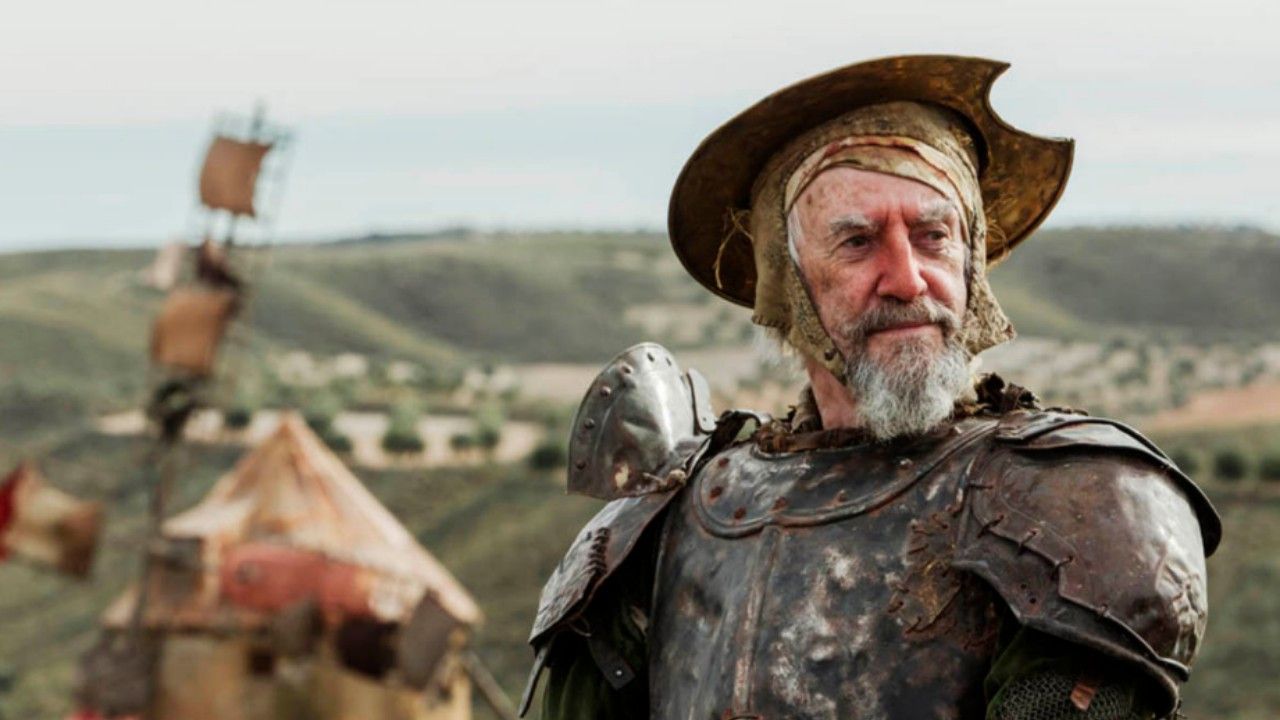
Never has a film come so close to reality yet fall apart time and time again in Gilliam’s hands. A dream project for the Python member, Gilliam’s take on the classic story has been in the works for close to three decades, with production initially geared up for a 1998 start with a bankable Johnny Depp in the cast playing co-lead character, Toby Grisoni.
Filming began in late 2000 with a mid-level budget but storms and flooding wrecked the set, actors failed to turn up to work and the actor playing Quixote, French actor Jean Rochefort, suffered a spinal injury and was noticeably in pain on camera. Rochefort was forced to drop out and the project was cancelled two month later. The acclaimed documentary, Lost in La Mancha, detailed the setbacks for the aborted film yet Gilliam was still determined to one day finally finish this now dream project of his.
Legal issues halting development and funding continuously fell through just when things appeared to finally be moving along for the now legendarily doomed feature with a who’s who of actors at one point or the other filling the role of Quixote (ranging from John Hurt to fellow Monty Python member Michael Palin) and Grisoni (Depp remained on through the years but after his eventual exit there was Ewan McGregor and Jack O’Connell) but thankfully for the director, in 2017 filming finally began again for the first time in 17 years with Jonathon Pryce and Adam Driver portraying Quixote and Grisoni respectively.
Even after filming and editing was finally complete, the troubles continued with a legal rights issue being taken to court between Gilliam and a producer with an attempt made to block its debut in Cannes of this year.
The court ruled in the producer’s favour and Gilliam subsequently lost the rights with Amazon Studios dropping the film as its US distributor around the same time period. The film is still expected to be released sometime shortly in the future but only adds to the almost mythical curse that surrounds it.